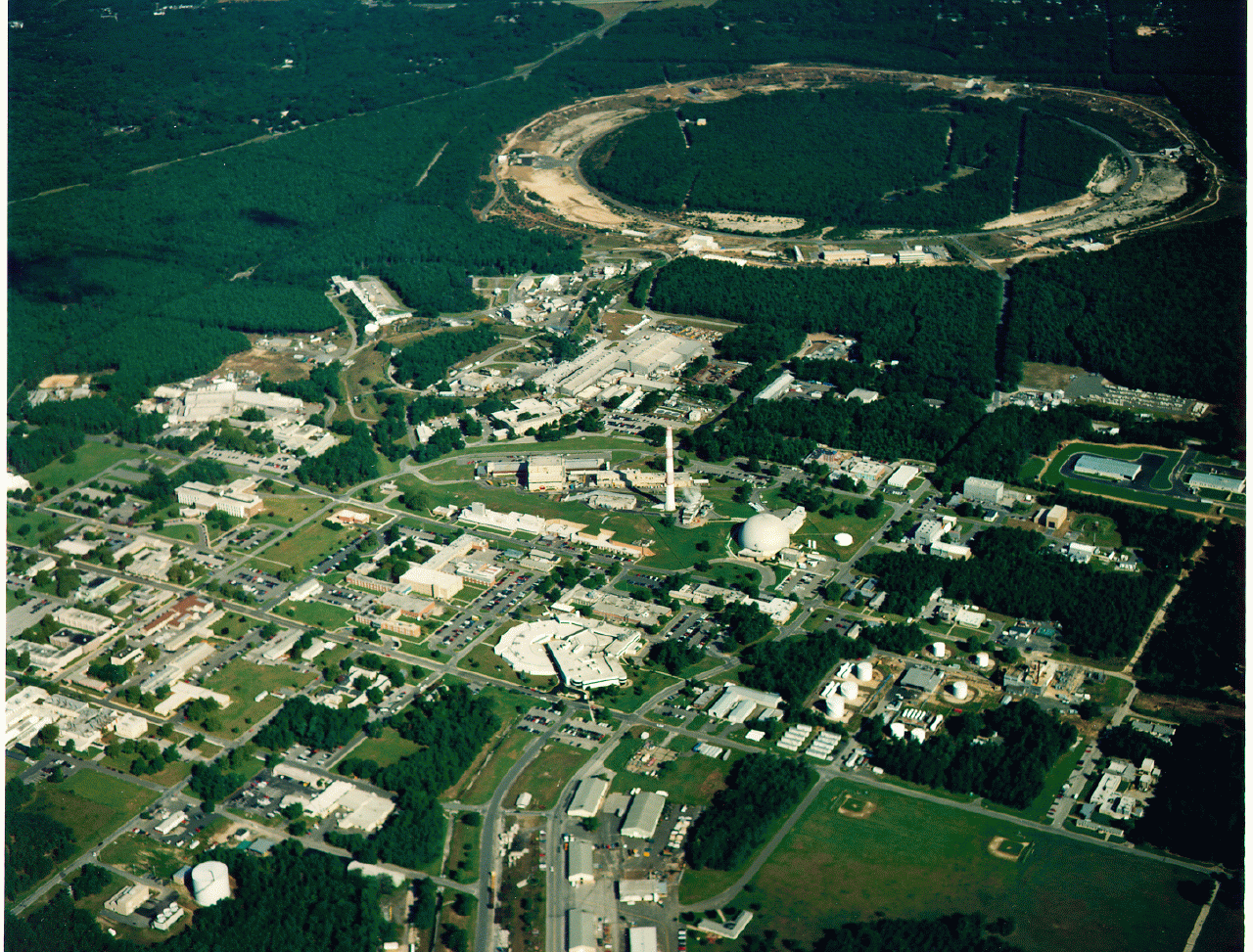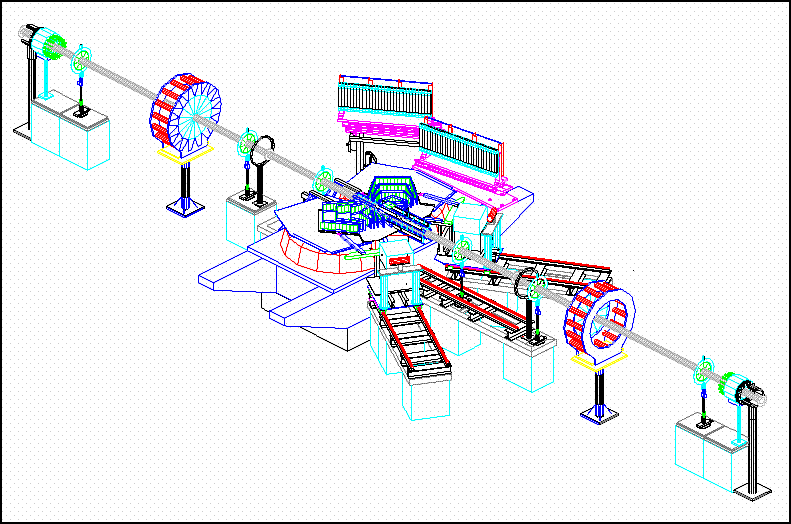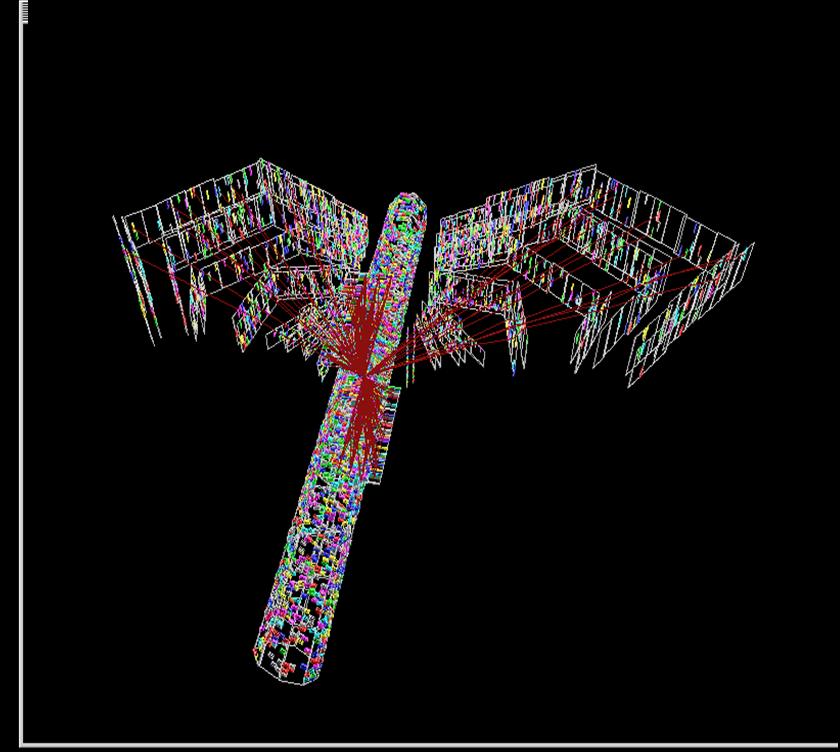Heavy ion physics
PHOBOS experiment at Brookhaven National Laboratory (RHIC)
Suppose you could create a droplet of "Big Bang"
and watch it decay in the laboratory ...
Aerial view of Brookhaven National Laboratory. The ring at the top right is the Relativistic Heavy Ion Collider.
The Phobos experiment at RHIC (left) and a Au-Au collision as seen in the PHOBOS event display (right)
The group is currently focussed on the Phobos experiment at Brookhaven National Laboratory's Relativistic Heavy Ion Collider (RHIC). This experiment is one of the four original, complementary experiments at RHIC. The other three experiments are STAR, PHENIX and BRAHMS. These experiments each surround one of four interaction regions at RHIC where beams of heavy ions, such as gold, collide with a center-of-mass energy as high as 200 GeV per nucleon pair.
As the heavy ions pass through each other, they will deposit a great deal of energy in the space at the collision point due to strong nuclear interactions between nucleons in the heavy ions. In that small volume, which is large relative to the size of the interacting particles, an energy density (or temperature, if you wish) roughly the same as that of the expanding universe at an age of one microsecond will be attained. In these extreme conditions, the quarks and gluons that are normally confined by the strong nuclear interaction into particles like protons and pions are expected to no longer feel the strong interaction. Normal particles will no longer exist in this region. Instead we hope to find a new form of matter called the quark-gluon plasma (QGP), where the quarks and gluons move relatively freely and the characteristics of the plasma can be described by statistical thermodynamics. By characterizing this plama and watching it undergo a phase transition back into normal matter as it cools, we hope to learn interesting things about the strong nuclear interaction. A good and not-too-technical overview of the experiment and scientific goals can be found here . A more technical overview can be found here.
At the University of Rochester, there is a large Phobos effort. One part of this effort is focused on the construction of the Phobos time-of-flight wall (used to extend the detector's particle ID capability). This effort is led by Frank Wolfs and Robert Pak. You can find out more about this work here. The other side of the Rochester effort is focused on software development and jumpstarting the initial physics program. This effort, led by Steve Manly, has recently pursued the analysis of collective flow in the RHIC collisions. You can find out about this work and the rest of the exciting physics we are doing with Phobos on the Phobos server.


